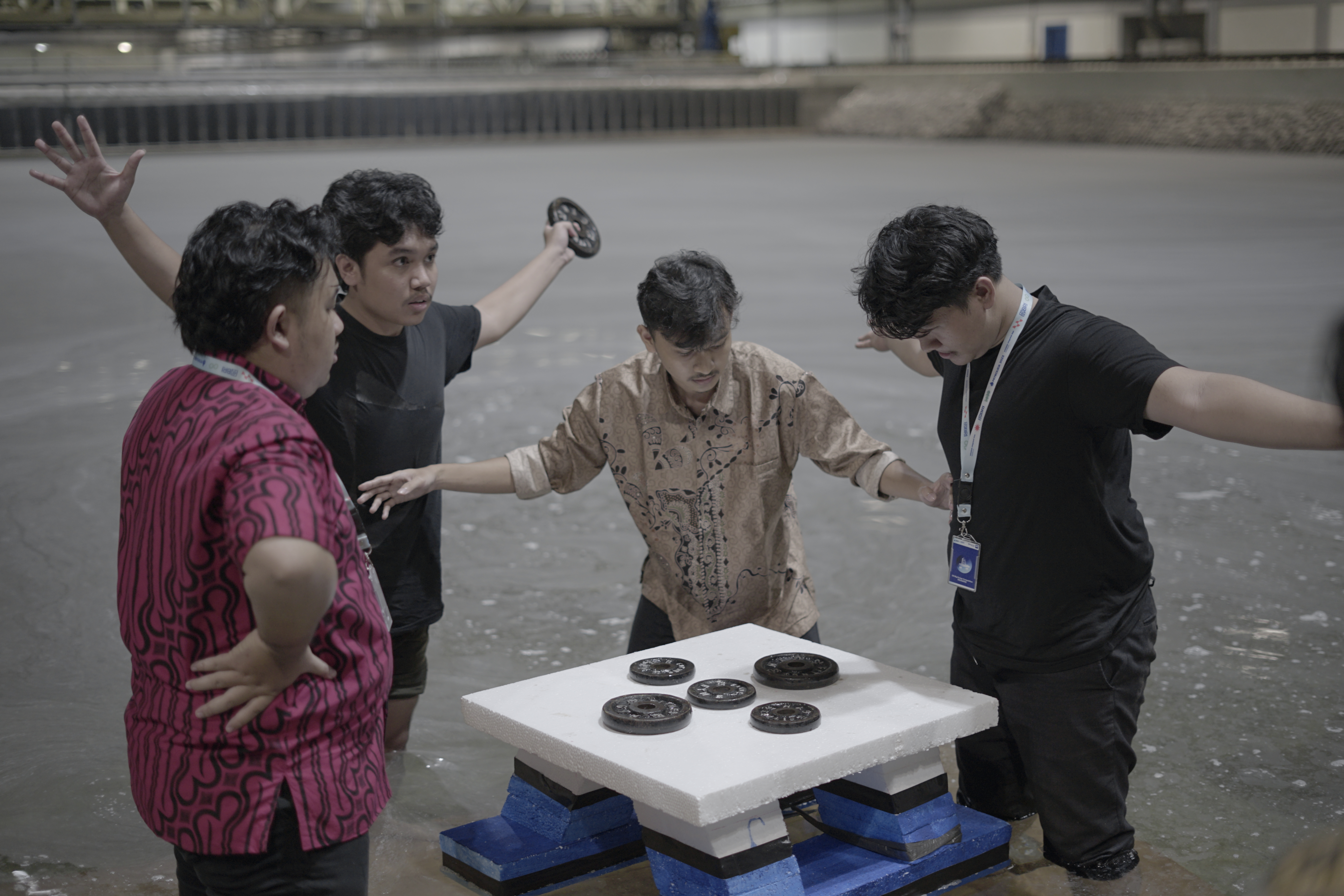A team of students from the Department of Chemical Engineering (DTK), Faculty of Engineering (FT), Universitas Indonesia (UI), has designed a drilling platform (rig) for oil and gas drilling in the East Natuna Sea that is more cost, time and space efficient. The rig, initiated by the FTUI students, uses equipment that is efficient and lower in cost than typical rigs. In addition, it is designed with a technology system that can reduce carbon emissions.
“This rig is specifically designed to operate effectively in challenging terrain, in this case, we took the example of the East Natuna Sea location. We carefully selected high-performance equipment for the rig structure, drilling and power systems to ensure optimal fit. Our rig design places great importance on safety. One of the issues of drilling in Natuna itself is the high levels of CO2 and H2S that can cause accidents. Therefore, we place great importance on preventing possible accidents, including explosions that may occur by using the latest and most advanced technology to overcome these possible hazards,” said Azwir Al Kapi Dheazki Putra, one of the team members.
The rig design is named PADEEM, which is also the official name of the student team that designed it. Along with Azwir, the PADEEM Team consists of DTK FTUI class of 2020 students Fikri Eli Rosady, Muhammad Fachry Arrifqi, Patrick Lim Batara Theofillus, and Porkhas Khasogi Kansond.
PADEEM is also designed to provide time, cost, and space efficiency. To achieve cost efficiency, MHWirth cranes with construction beam legs were used, which are not only cheaper but also better than other technologies.
The rig is equipped with the Unitong system, an all-in-one system that requires less human intervention, and fewer equipment requirements, and provides faster connections, resulting in a reduction in Non-Productive Time (NPT). The rig also requires less space, further reducing costs, and utilizes a crane with smaller dimensions than other high-efficiency cranes, resulting in more space on the rig floor.
“The rig we designed is also equipped with a horizontal drilling system that can reach up to 2000 feet and is capable of producing an optimal amount of hydrocarbons. To adapt to the environmental conditions in East Natuna, the rig is also designed to be resistant to ocean waves by being given the best anti-corrosion treatment,” Patrick said.
In PADEEM’s design, the height of the drilling tower is lower than a normal tower, reducing disturbance from wind and waves. With ample storage of fuel, water and other necessities, the rig is designed to be built and used in remote areas, such as East Natuna.
Dean of FTUI, Prof. Dr. Heri Hermansyah, S.T., M.Eng., IPU, said, “The innovation of FTUI students in designing this efficient oil and gas drilling rig is something to be proud of. They not only demonstrate a deep understanding of engineering, but are also able to come up with creative solutions that can save costs, time, and space in vital industries such as oil and gas. This kind of collaboration reflects FTUI’s commitment to producing graduates who contribute significantly to the advancement of technology and the development of society.”
Thanks to the PADEEM design, the five students won first place at the Petroleum Integrated Days (Petrolida) Oil Rig Design Competition 2023, which was announced at the end of May. The competition was organized by the Society of Petroleum Engineers (SPE) ITS Student Chapter and Pertamina EP Cepu. In this competition, participants were asked to design an oil and gas drilling platform that best suits the given case study in terms of Structure, Drilling, Power, and Economic Feasibility.
***
Public Communication Bureau
Faculty of Engineering, Universitas Indonesia

